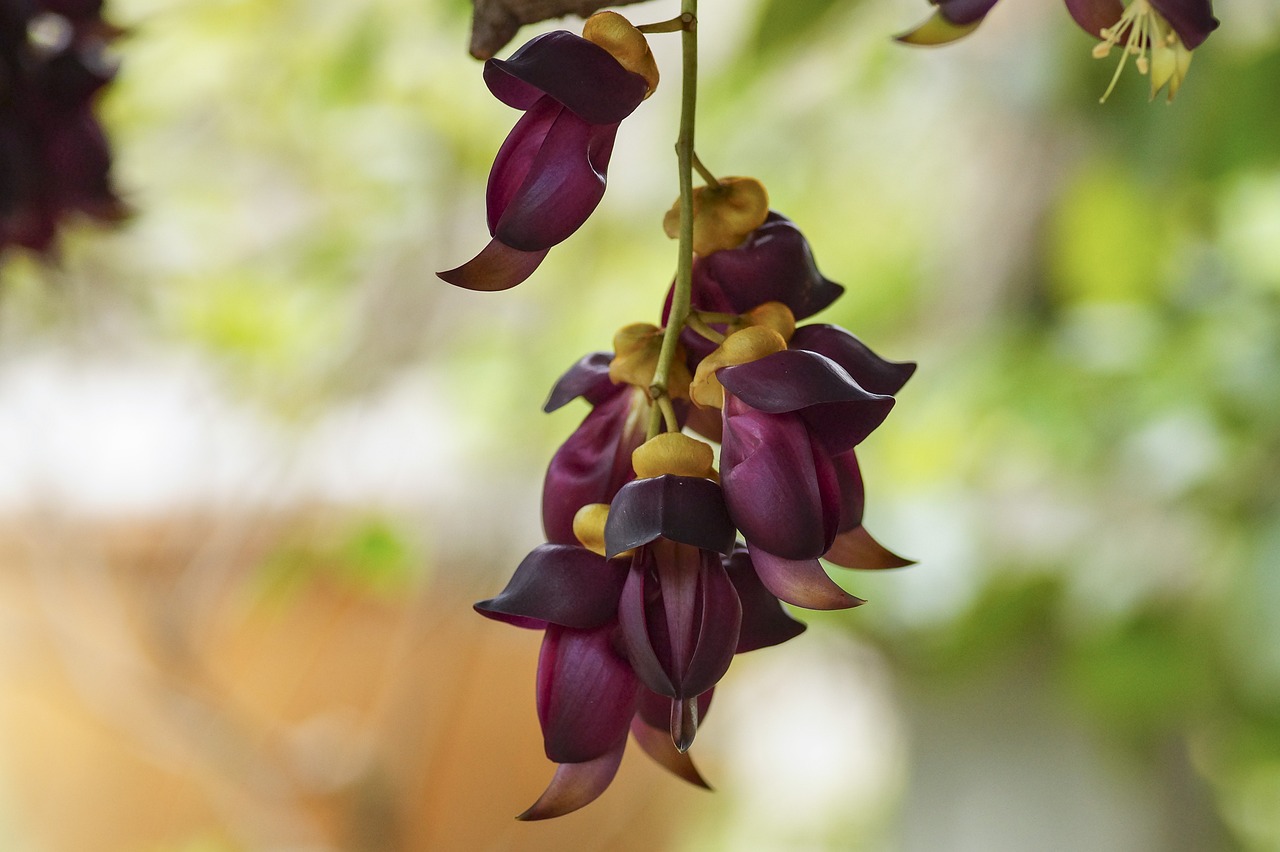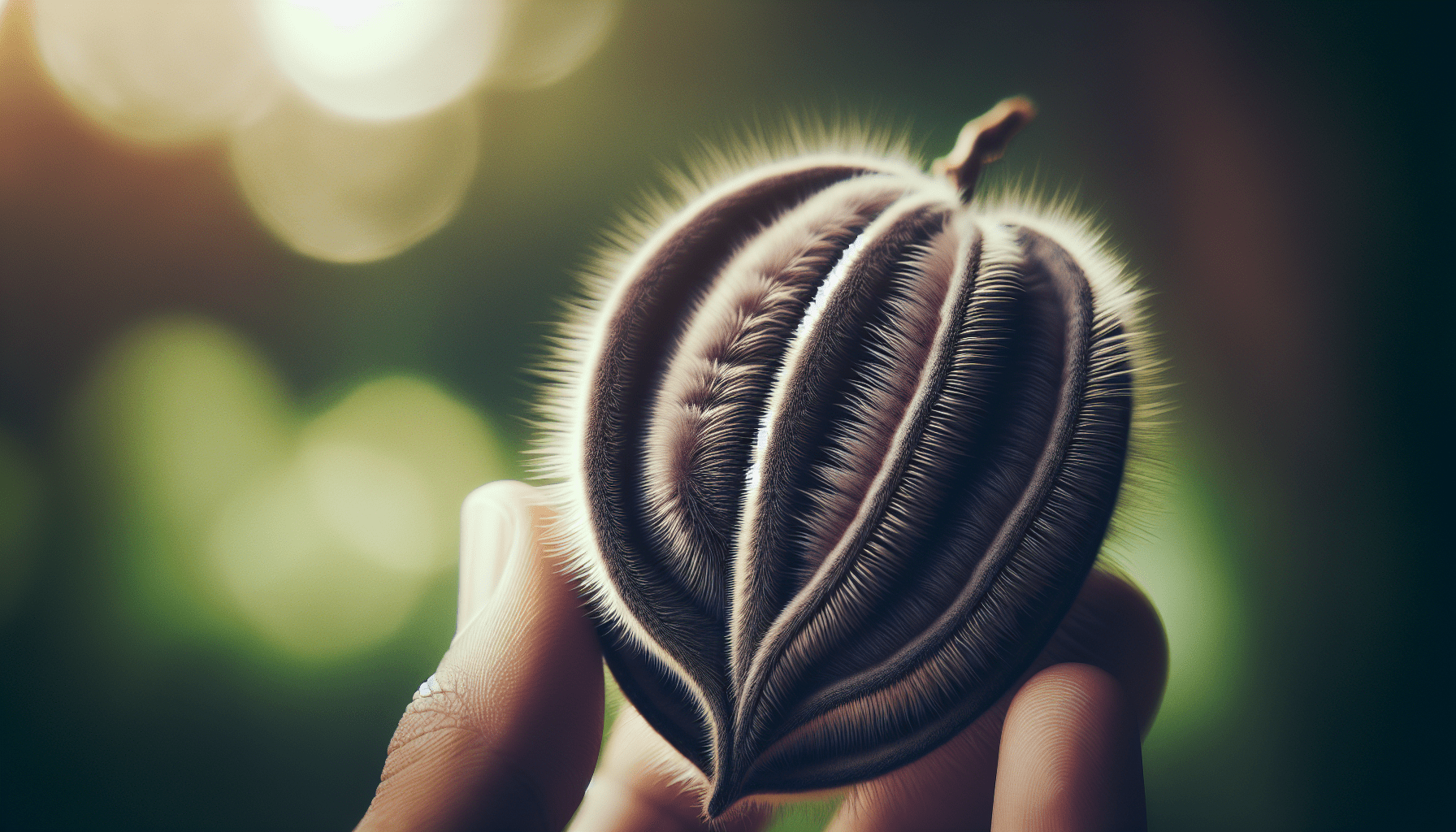Have you ever encountered a plant that felt strangely more like petting a soft animal than touching a leafy green? This sensation may come as a delightful surprise to many, and it’s especially fascinating when you learn that nature boasts its own lineup of fuzzy flora. Let’s walk through one such intriguing example – the velvet bean – and discover the unexpected world of nature’s furry oddities.
The Velvet Bean: Nature’s Fuzzy Surprises
What is the Velvet Bean?
The velvet bean, scientifically known as Mucuna pruriens, is an intriguing tropical legume with pods so soft and hairy they feel like velvet. This tropical legume is a member of the Fabaceae family and can be found in many regions around the world, including Africa, India, and the Caribbean. Renowned for both its agricultural and medicinal uses, the velvet bean holds an interesting place in the plant kingdom.
Historical Uses of the Velvet Bean
Velvet beans have been used for centuries in traditional medicine, particularly in Ayurveda for their perceived therapeutic properties. The beans are known to contain levodopa (L-dopa), a precursor to dopamine, making them useful in treating conditions such as Parkinson’s disease. Additionally, they are sometimes utilized as a natural remedy for improving mood and fertility.
Historical Uses
| Region | Use |
|---|---|
| Africa | Soil enrichment, livestock fodder |
| India | Traditional medicine (Ayurveda), fertility |
| Caribbean | Treating domestic animals, natural treatment |

The Furry Surprise: Why the Velvet Bean is Fuzzy
The velvet texture of this bean serves several purposes. Primarily, the fine hairs on its pods act as a defense mechanism against pests. These trichomes, or tiny hair-like structures, can deter insects and other potential threats with their physical barrier. Additionally, they help in preventing moisture loss, crucial for plants growing in hot, arid climates.
The Science Behind Furry Plants
Interestingly, the presence of these furry structures, scientifically referred to as trichomes, can be found across various plant species. In the case of velvet beans, these trichomes perform multiple roles:
- Protection Against Pests: The fine hairs can irritate and deter insects, acting as a physical barrier.
- Moisture Retention: In hot environments, these hairs can reduce water loss by trapping a humid microclimate around the plant.
- Temperature Regulation: By reflecting sunlight, these tiny hairs can help prevent excessive heating of the plant’s surface.

Other Furry Plants and Their Beneficial Quirks
Though vegetables and beans aren’t typically where we expect to find fur-like textures, nature has a way of surprising us with its ingenuity. Here are a few more examples of furry plants:
Furry Fruits and Vegetables
| Plant | Furry Feature | Why It’s Furry |
|---|---|---|
| Kiwi | Fuzzy skin | Protection from damage, water retention |
| Peaches | Velvety skin | Protects delicate fruit inside |
| Certain Tomatoes | Fuzzy stems and leaves | Protection against insects, moisture retention |
In the case of kiwis and peaches, the fuzz serves similar purposes to that of the velvet bean: protecting the fruit, reducing water loss, and deterring pests.
The Unique Benefits of Furry Leaves
Beyond fruits and beans, some plants have developed furry leaves. Consider lamb’s ear and mullein. These plants exhibit soft, velvety hairs on their leaves, serving functions akin to those in the velvet bean.
Benefits of Furry Leaves
| Plant | Benefit |
|---|---|
| Lamb’s Ear | Protection from extreme temperatures |
| Mullein | Reduces water loss, wards off predators |
These fluffy leaves not only provide tactile pleasure but also reveal a rich story of adaptation and survival. For example, mullein’s hairy leaves help it thrive in arid conditions by reducing water evaporation and offering protection from herbivorous predators.

Furry Plants in Modern Gardening
Gardening enthusiasts might find furry plants a delight to cultivate, not only for their unique textures but also for their practical benefits. For instance, the velvet bean can be a valuable addition to your garden for the following reasons:
Modern Gardening Benefits
| Aspect | Benefit |
|---|---|
| Pest Control | Natural deterrent against garden pests |
| Soil Improvement | Nitrogen-fixing ability enriches the soil |
| Aesthetic Appeal | Unique texture adds visual interest |
Planting velvet beans can significantly improve soil health due to their nitrogen-fixing capabilities. The beans enrich the soil with nutrients, making them a fantastic addition to any organic garden.
The Role of Furry Plants in Ecosystems
The ecological importance of furry plants extends beyond individual gardens. These plants contribute to their ecosystems by providing habitats, food sources, and contributing to biodiversity.
Ecological Contributions
| Role | Impact |
|---|---|
| Habitat Creation | Provides shelter for insects and small animals |
| Biodiversity Support | Enhances plant diversity, supporting various species |
| Soil Health | Nitrogen-fixing improves soil fertility |
Velvet Bean: An Agricultural Ally
Velvet beans boast significant agricultural benefits. Their ability to fix nitrogen not only improves soil fertility but also reduces the need for chemical fertilizers. This makes them an ally to sustainable farming practices.
Agricultural Benefits
| Benefit | Explanation |
|---|---|
| Soil Fertility | Fixes atmospheric nitrogen, enriching the soil |
| Natural Pesticide | Fuzzy pods deter insects, reducing pesticide need |
| Erosion Control | Dense root system helps prevent soil erosion |
Culinary and Nutritional Aspects
While you may not typically find velvet beans on your dinner plate, they do hold nutritional value and can be prepared in specific ways for consumption. They are rich in protein, making them a valuable food source in some cultures.
Culinary Uses
| Region | Preparation Method |
|---|---|
| Africa | Cooked as part of traditional dishes |
| India | Used in Ayurvedic dietary practices |
| Caribbean | Sometimes used in animal feed |
How to Grow Velvet Beans
Interested in growing your own velvet beans? It’s simpler than you might think. This legume requires a warm climate and plenty of sunlight. Here are some steps to get you started:
- Planting: Sow the seeds in well-draining soil with good sun exposure. Plant them about one inch deep.
- Watering: Keep the soil consistently moist but not waterlogged.
- Support: Velvet beans are climbers, so provide a trellis or support for them to grow on.
The Velvet Bean’s Place in Traditional Medicine
Traditional medicine has long utilized velvet beans for their potent properties. Ayurvedic practices particularly treasure them for their benefits in improving mood and treating neurological conditions.
Medicinal Properties
| Compound | Benefit |
|---|---|
| Levodopa (L-dopa) | Beneficial for Parkinson’s disease |
| Antioxidants | Protect against oxidative stress |
| Protein | Nutritional value for overall health |
Potential Side Effects and Precautions
While velvet beans have many benefits, it’s crucial to consume them with awareness. Raw velvet beans can be toxic and must be cooked properly to eliminate harmful compounds. Always consult with a healthcare provider before using them for medicinal purposes.
Possible Side Effects
| Side Effect | Precaution |
|---|---|
| Gastrointestinal issues | Ensure beans are thoroughly cooked |
| Toxicity | Avoid consuming raw beans |
| Interaction with Medications | Consult with a healthcare provider first |
The Future of Furry Plants
Looking ahead, the future holds exciting possibilities for the utilization of furry plants like the velvet bean. With their unique benefits for agriculture, medicine, and environmental sustainability, these plants may become increasingly valuable assets.
Future Applications
| Field | Potential Use |
|---|---|
| Agriculture | Sustainable farming, natural pest control |
| Medicine | Development of new treatments with natural compounds |
| Environmental Sustainability | Soil enrichment, erosion control |
Cultivating Curiosity and Appreciation
As we explore the fascinating, fuzzy world of plants like the velvet bean, it’s evident that nature’s designs serve essential purposes beyond their initial appearances. Understanding these plants enhances our appreciation for biodiversity and the intricate ways in which ecosystems operate.
By taking the time to observe and learn about these natural wonders, you not only enrich your knowledge but also contribute to the appreciation and conservation of the diverse forms of life on our planet. Keep your eyes and curiosity open—you never know when you might stumble upon another of nature’s delightful, fuzzy surprises.
Conclusion
The velvet bean, with its soft, furry exterior and multifaceted benefits, serves as a remarkable example of nature’s ingenuity. From agricultural advantages to medicinal uses, and from its unique texture to its ecological contributions, the velvet bean is a testament to the surprising and wonderful ways plant life adapts and thrives.
So next time you encounter a plant or fruit with a peculiar fuzzy texture, take a moment to ponder the hidden wonders that might be behind it. You’re sure to find that nature’s most delightful surprises often come wrapped in velvet.
